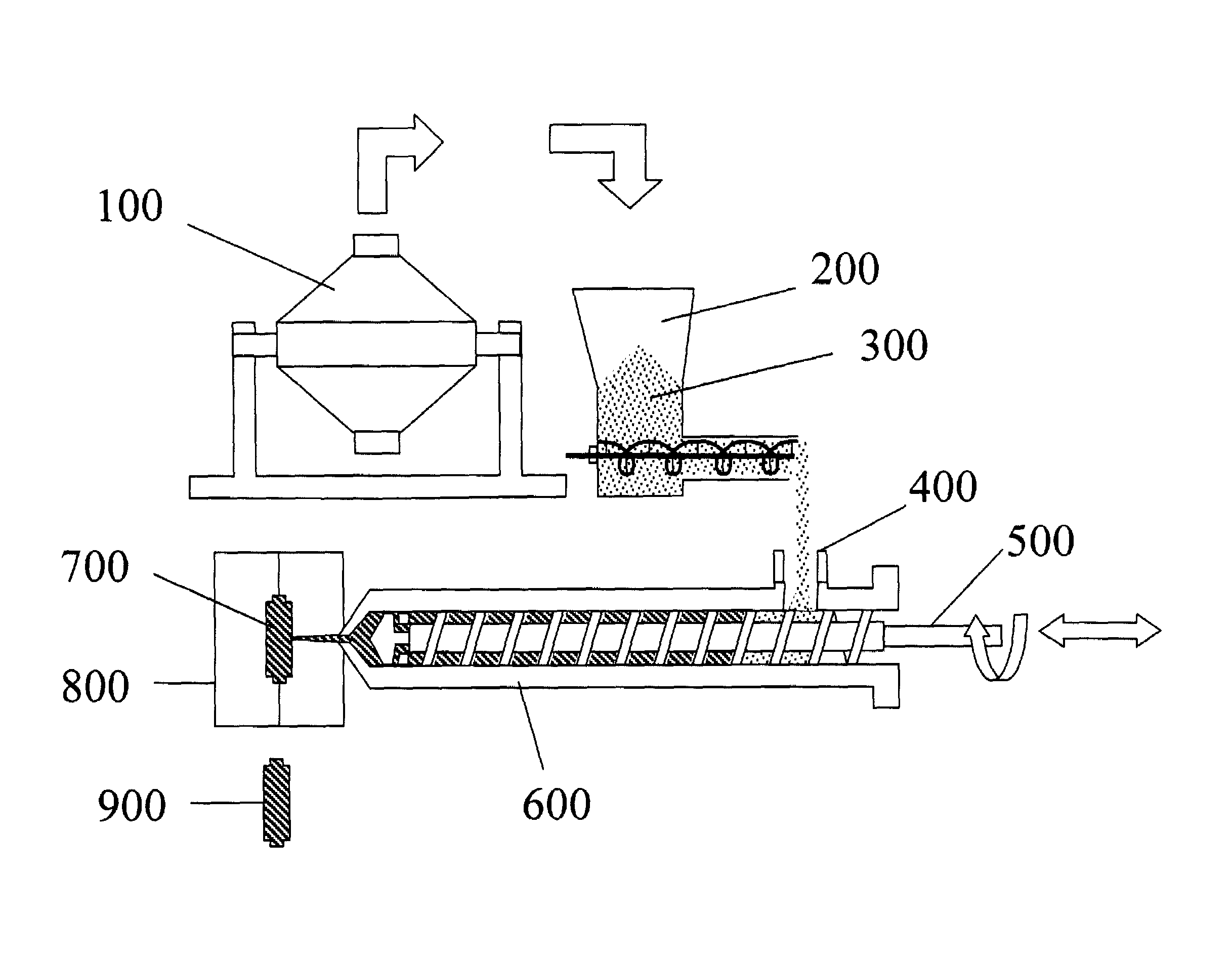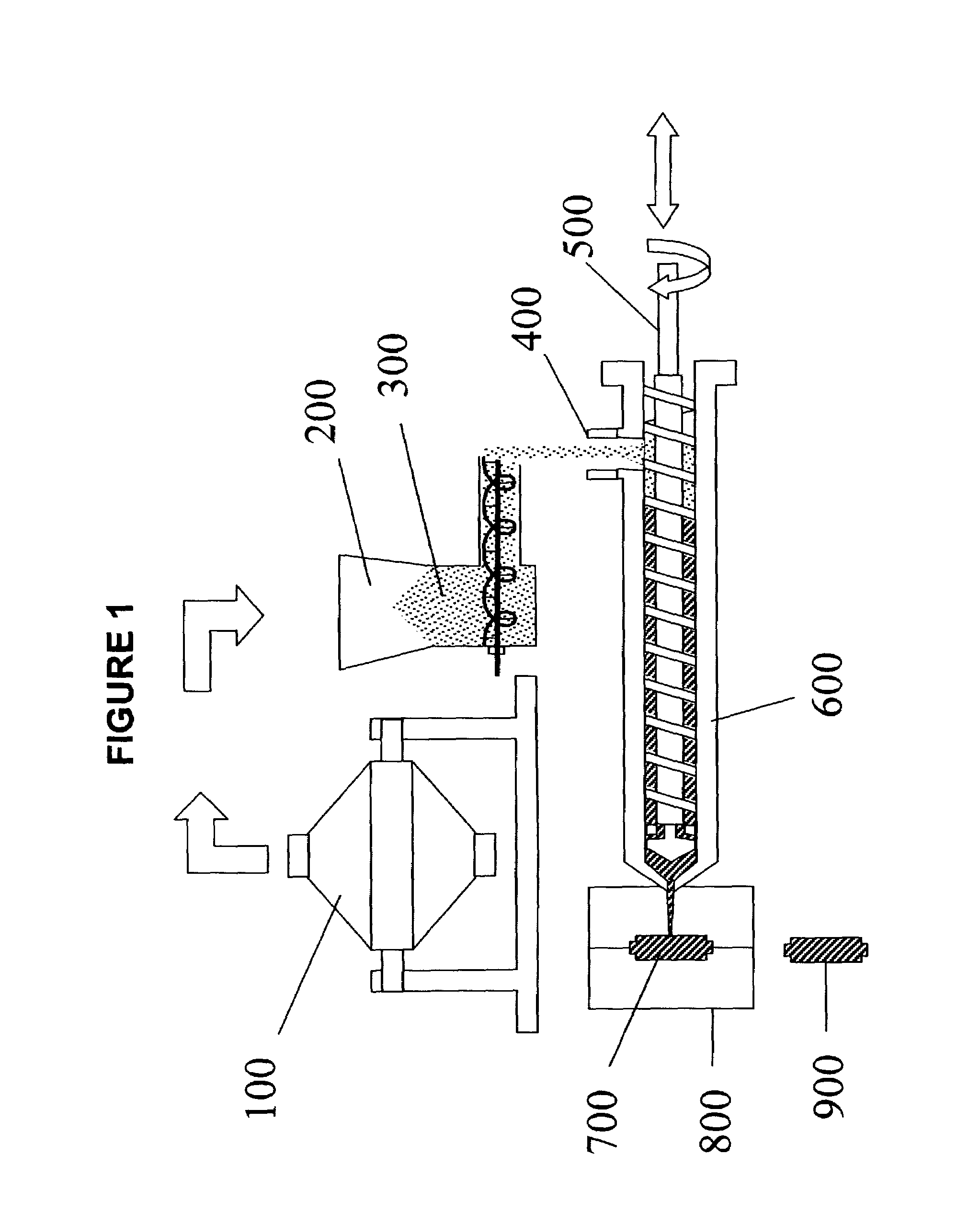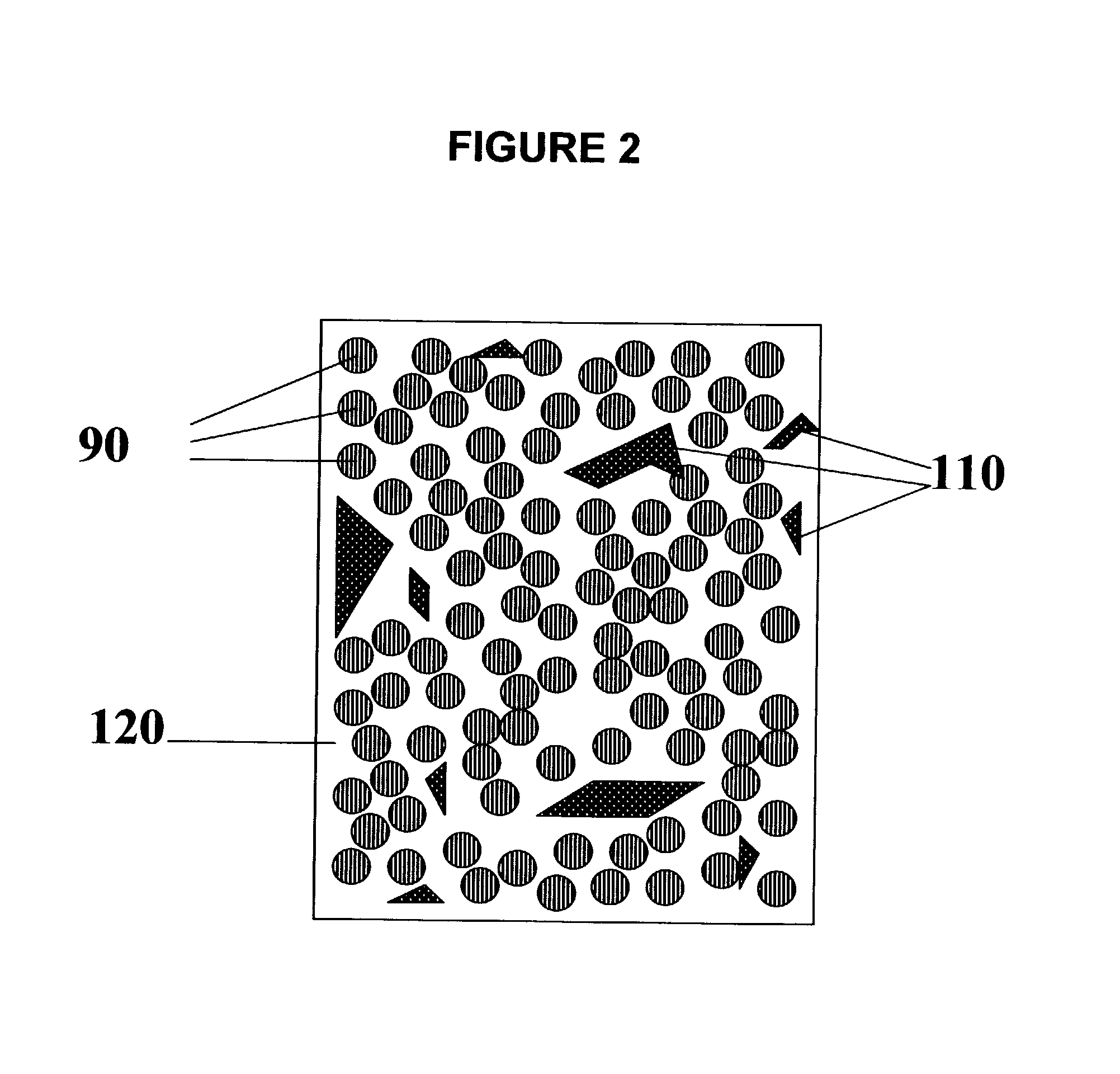Method of producing shared articles
a technology of shared articles and molding mixtures, applied in the field of shared article production methods, can solve the problems of inconvenient mixing and mixing, high production costs of mixing equipment, and high capital equipment requirements, and achieve the effects of optimizing the production of a given part, and reducing the cost of manufacturing
- Summary
- Abstract
- Description
- Claims
- Application Information
AI Technical Summary
Benefits of technology
Problems solved by technology
Method used
Image
Examples
example 1
[0055]A dry powder mixture was made by thoroughly mixing 2000 grams of Anval−22 micron 17-4 PH stainless steel powder (Powder Products Division of Carpenter Technologies, Reading, Pa.) with 44.44 grams of powdered agar (TIC PRETESTED® Agar Agar 100) in a Paul O. Abbe, 0.5 gallon (1.82 liter) capacity sigma-blade mixer running at about 20 rpm for 5 minutes at room temperature. A sigma-blade mixer was used because of its ready availability but less powerful and expensive mixing equipment would have served just as well. 177.6 grams of a saturated solution (approximately 0.25 wt. %) of calcium metaborate in distilled water was gradually added to the sigma mixer, and mixing was continued at 20 rpm for an additional 60 minutes at room temperature, producing a loose, damp powder mixture containing about 90 wt. % 17-4 PH stainless steel powder, 8.0 wt. % of the aqueous borate solution, and 2.0 wt. % agar. Based on visual observation of the material during mixing, the mixing was complete in ...
example 2
[0059]A dry powder mixture was made by thoroughly mixing 4000 grams of iron-2% nickel powder (Atmix P20F from Atmix Corporation, Hachinohe-shi, Aomori-ken, Japan) with 111 grams of powdered agar (TIC PRETESTED® Agar Agar 100) in a Paul O. Abbe, 0.5 gallon (1.82 liter) capacity sigma-blade mixer running at about 20 rpm for 5 minutes at room temperature.
[0060]A solution containing 1.8 grams of potassium nitrite (a rust inhibitor, Alpha Aesar CAS# 7758-09-0) and 3.5 grams of potassium tetraborate (Alpha Aesar CAS# 12045-78-2) in 400 cc of distilled water, were then added to the sigma mixer along with 0.8 gm of methyl p-hydroxy benzoate (biocide, Fisher Scientific CAS No. 99-76-3), and 0.6 gm of n propyl p hydroxybenzoate (biocide, Fisher Scientific CAS No. 94-13-3), and mixing was continued at 20 rpm for an additional 20 minutes, still at room temperature, producing a loose, damp powder mixture, similar to the product of example 1, containing about 89 wt. % Fe-2Ni metal powder, 9 wt. %...
example 3
[0063]Two batches of molding mixture, identical to that of Example 1 were prepared, except that the agar used for the second batch was TIC Agar Agar 150 FCC / NF (TIC 150). As in Example 1, the material was fed to the inlet hopper of a Boy 22 ton injection molding machine with all barrel and nozzle hearing zones set at 180° F. (82° C.) and screw rotation speed set at 45 rpm. A number of rectangular step thickness test bars were molded. The cavity dimensions for the step bar mold measured 1.5″ wide by 2.25″ long by 0. 125″ thick at on end, stepping down to 0.062″ thick at the other end. Feed screw back pressure was varied. Twenty-five bars were molded from the TIC 100 agar batch, and nineteen bars were molded from the TIC 150 material. The parts were dried in a drying oven set at 212° F. (100° C.) for 2 hours and cooled to room temperature and then each part was weighed. The average weight of the TIC 100 batch test bars was 25.224 grams with an estimated standard deviation of 0.145 gra...
PUM
| Property | Measurement | Unit |
|---|---|---|
| wt % | aaaaa | aaaaa |
| temperature | aaaaa | aaaaa |
| molding pressure | aaaaa | aaaaa |
Abstract
Description
Claims
Application Information
 Login to View More
Login to View More - R&D
- Intellectual Property
- Life Sciences
- Materials
- Tech Scout
- Unparalleled Data Quality
- Higher Quality Content
- 60% Fewer Hallucinations
Browse by: Latest US Patents, China's latest patents, Technical Efficacy Thesaurus, Application Domain, Technology Topic, Popular Technical Reports.
© 2025 PatSnap. All rights reserved.Legal|Privacy policy|Modern Slavery Act Transparency Statement|Sitemap|About US| Contact US: help@patsnap.com



